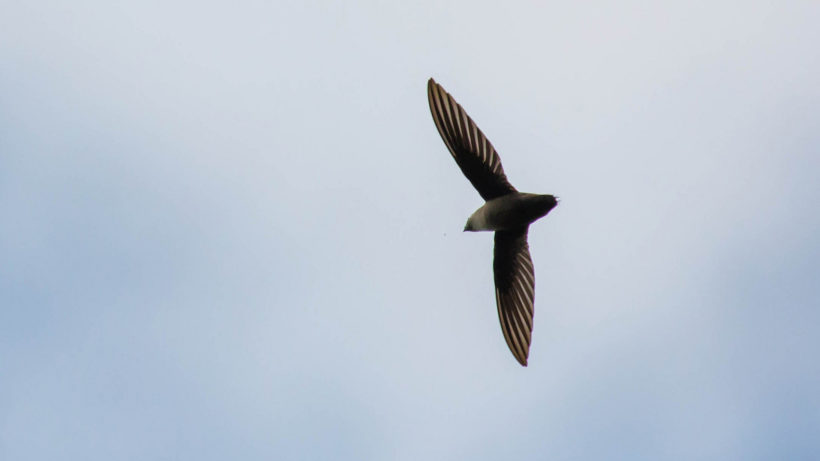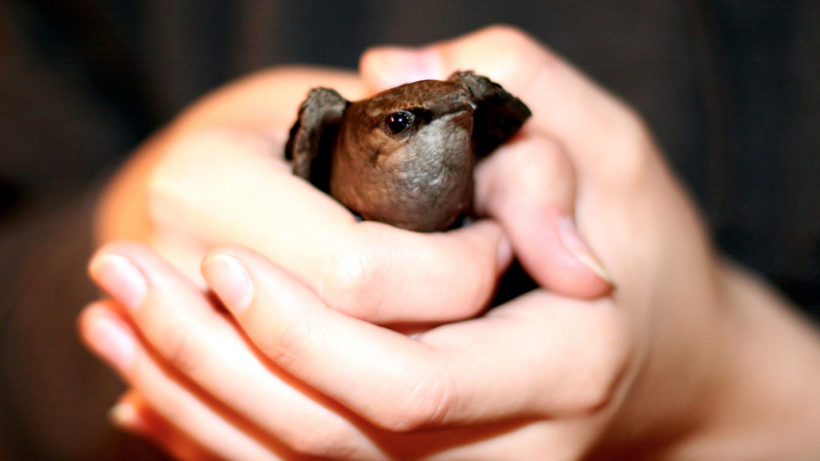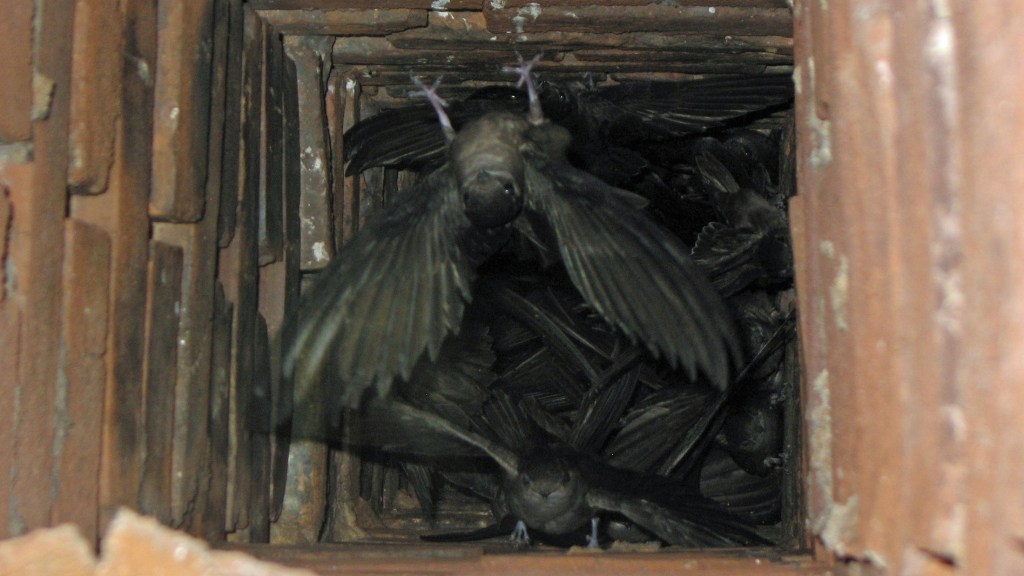Santa, not known for a slender frame, must miss the days of open masonry chimneys. Modern chimneys are too narrow for him to slide down as was once his custom.
And he’s not the only one who misses old fashioned, open chimneys. Meet the chimney swift, the bird that relies on chimneys (and similar man-made structures) for nesting.
Everything about the chimney swift conjures up smoke. These soot-colored swifts are best known among birders for their “flying cigar” shape. And, like smoke, they spend most of their time flitting around in the air. They fly so often that their feet aren’t adapted to perch like other birds – instead they’re perfect for clinging to the sides of vertical surfaces (like your chimney).

The Ups and Downs of Being a Chimney Swift
Chimney swifts didn’t always nest in chimneys, they evolved to nest in hollow trees (and some still do). As European settlers spread across North America, they cleared many forests, and built many houses that had open masonry chimneys.
The swifts quickly adapted to these new “nest boxes” and expanded their range. Where once they were rarely seen beyond the Mississippi River, they could now be found up to the foot of the Rocky Mountains.
In the breeding season, each nesting pair is territorial – there is only ever one nest per chimney. The breeding pair builds the nest in a half-cup shape using twigs and their sticky saliva to glue it to the wall.
Outside of breeding season, chimney swifts stick together, roosting communally in (you guessed it) chimneys. Sometimes thousands roost in the same chimney where their body heat can raise the temperature inside the chimney up to 70° F above the temperature outside.
Nowadays most chimneys are narrow, capped, and inhospitable to chimney swifts. According to the International Union for Conservation for Conservation of Nature (IUCN) Red List, numbers have dropped about 1.8% per year since 1966 in the US, which stacks up to a total decline of 53% in the population. The rate of decline has increased in recent years. If this trend continues, the IUCN will consider the chimney swift Vulnerable (that’s one spot on the Red List away from Endangered).
The IUCN states that the loss of forests and traditional chimneys for nesting and roosting habitat is the most significant threat to the chimney swift.
A Gift for a Swift
Chimney swifts are wintering in South and Central America at the moment, but you can start planning a gift for them this holiday season.

For those who enjoy DIY projects, try building a “Swift Tower.” You can get instructions and register your tower with the Chimney Swift Conservation Association.
There are a couple of options for citizen scientists. For a long-term project, record all your chimney swift sightings on eBird. If your time is more limited, you can still participate in A Swift Night Out and estimate the number of swifts (chimney swifts or the closely related Vaux’s swifts) that enter a roosting site and report your findings.
If you have a suitable chimney, you could welcome chimney swifts into your home. Chimney swifts are only in North America from spring through late summer, the time when you least need your chimney. If you leave the cap off in Spring and keep the damper closed, you might get a visit from the chimney swifts.
Baby swifts can be quite loud when they cry out for food, but this only lasts for a couple of weeks before they’re ready to leave the nest. And like all babies, they will leave a mess, so you’ll want to schedule a chimney cleaning either before the birds arrive or after the breeding season is over. In return, you will receive the benefit of having voracious insect predators feeding in your neighborhood – one chimney swift family can eat an estimated 12,000 insects each day.
Do you have tips for helping out a bird in need? Add items for the chimney swift’s wish list to the comments below.





I live in Jacksonville Fl and my dad had a fireplace installed installed in the mid 70’s. Today is May 5, 2021 and the chimney swifts have settled in. They come every year and the joy of the babies doing well and being protected is a privilege.
I love bird’s and I love the chimney swift the most
Hi, thank you for your article about these fantastic, not well known birds. We are in north Florida and we have these birds in our chimney every summer for the last 4 years, we impatiently wait for them. We are surrounded by horses and since we welcome these birds, we don’t have any fly problem. Like you mentioned, they are a little noisy at the end of the day but a little knock on the wall and they stay quit. Contrary to what you said, they leave the chimney very clean, this is one of the benefit of these birds.
Kindly,
Chimney and all Swifts are cool. Protect them!